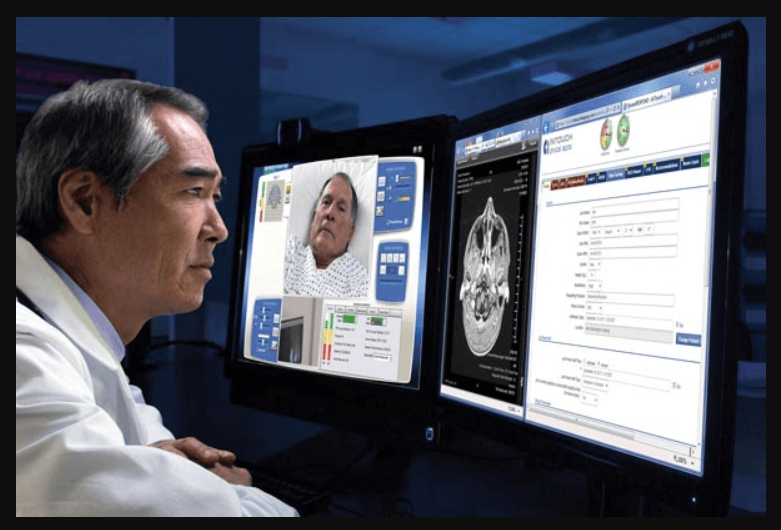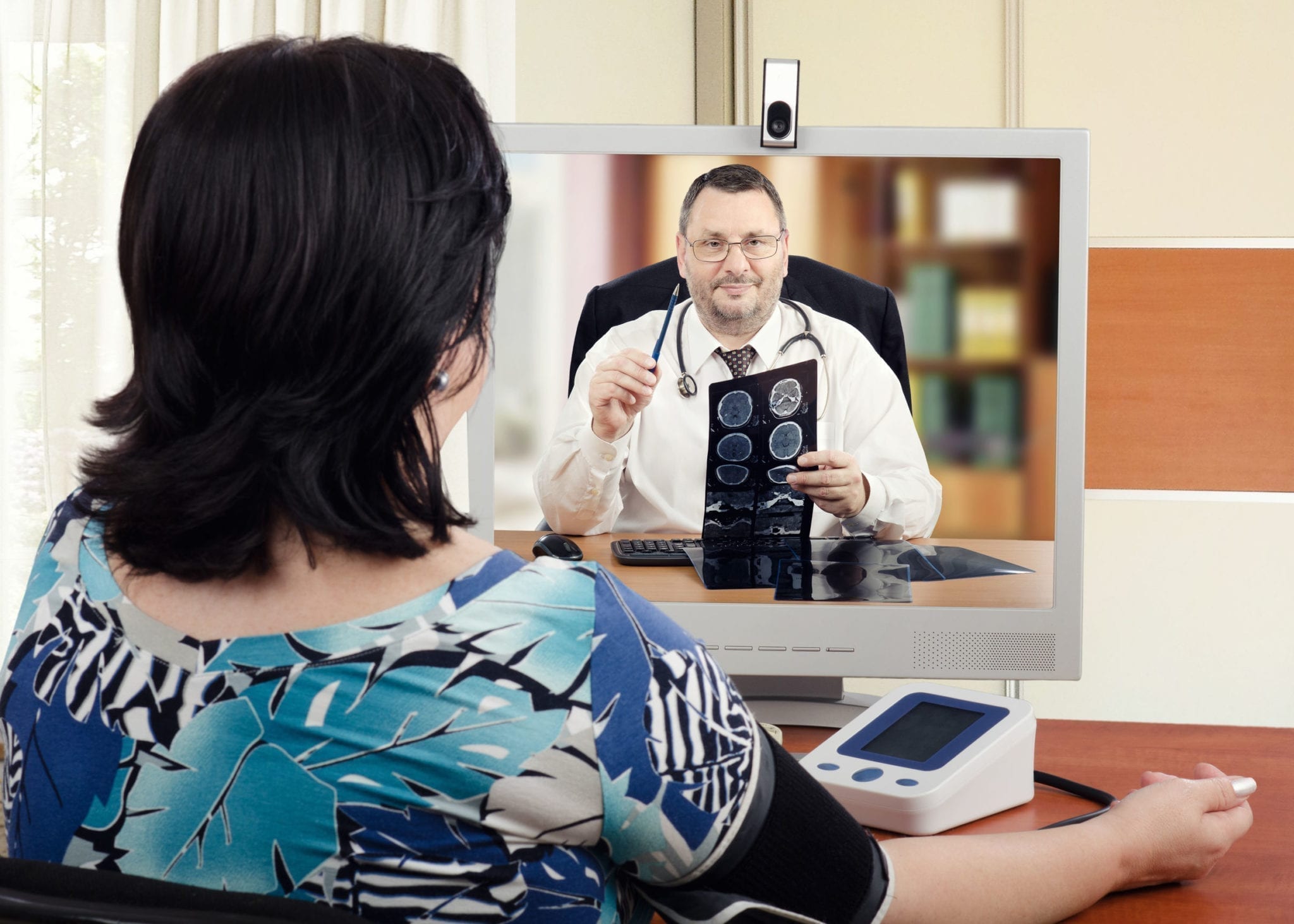Approximately 25% of patients used some form of telehealth service last year, far exceeding the 5% who accessed care this way before the pandemic. More and more people are turning to this convenient form of healthcare, and opting out of the waiting rooms entirely.
So, how have X-rays helped this new service along? In this article, we take a closer look at telemedicine, including how it works and how orthopedic X-rays have been a major driver of the industry.
What is Telemedicine?
Telemedicine is a form of remote healthcare delivery that uses telecommunications (think online video) to provide clinical services to patients, eliminating the need for in-person visits to a healthcare facility. This process is also referred to as teleradiology.
This type of healthcare also involves the exchange of medical data and advice between healthcare professionals and patients, usually facilitated through phone calls, text messaging, video conferencing, and secure online platforms.
Mobile consultations and diagnoses are made possible with digital X-ray sharing and interpretation. X-rays have played a significant role in the rise of telemedicine and in facilitating remote patient management.

How Have Orthopedic X-rays Helped to Drive Telemedicine?
Orthopedic X-rays convey crucial visual data about bone fractures, joint dislocations, and other musculoskeletal issues. Using telemedicine, patients can take X-rays at home or in local facilities, and then share the images with orthopedic specialists remotely.
Remote Diagnosis
X-rays used in telemedicine enable professionals to make a remote diagnosis. Experts can assess the severity of injuries without requiring patients to travel, saving time and reducing the administrative burden on healthcare facilities.
Efficient Follow-Up
After an initial diagnosis, patients can use telemedicine to share follow-up X-rays with orthopedic providers. This allows doctors to monitor the healing process, evaluate the effectiveness of treatment, and make adjustments as needed. This can all be done without requiring patients to travel for every follow-up appointment.
Reduced Patient Movement
Patients who have limited mobility due to orthopedic conditions may find it difficult to travel to healthcare facilities for regular appointments. Telemedicine, along with the ability to share X-rays remotely, reduces the need for unnecessary movement and minimizes patient discomfort.
Rural and Underserved Areas
In rural and underserved areas, where access to orthopedic healthcare services is limited, telemedicine, combined with remote X-ray capabilities, can help to bridge the gap. It provides patients with access to orthopedic expertise that would otherwise be difficult to obtain.
Medical Training and Education
Orthopedic X-rays that are shared through telemedicine can also be used for medical training and education purposes. Medical students and residents can learn from real-world cases to enhance their diagnostic skills.
Additional Ways X-rays Have Helped
- X-rays help providers give timely consultations with proactive treatment advice
- Patients seeking a second opinion can share orthopedic X-rays via telemedicine
- Enhanced collaboration with orthopedic specialists and other healthcare professionals

How Do Remote Consultations Work?
Remote consultations through digital X-ray sharing have been made possible by advancements in technology (portable X-ray machines) as well as telemedicine platforms.
Here’s how the process works:
#1) Image Capture
It begins with a patient visiting a local healthcare facility equipped with X-ray imaging technology. Or, a technician can visit a patient in-home, using a mobile or portable X-ray device. X-ray images are taken by trained radiographers or technologists.
#2) Digitalization
The X-ray images are digitized. This creates a high-resolution digital file that is easily stored, transmitted, managed, and shared electronically.
#3) Upload to Telemedicine Platform
The digital images are securely uploaded to a secure server or telemedicine platform. These applications often have features that allow patients to directly share their medical records and images with healthcare providers
#4) Virtual Consultation
The orthopedic specialist reviews the uploaded X-rays before the scheduled virtual consultation. During the appointment, the doctor will discuss the patient’s symptoms, concerns, and medical history.
The X-ray images are shared onscreen, in real-time, between the specialist and the patient. This makes it easier for them to discuss a course of action and explain any diagnosis.
#5) Treatment Plan
Based on the X-ray images and the data provided by the patient, the orthopedic specialist will make a diagnosis and recommend a treatment plan. This can include prescribing medication, recommending surgery, suggesting physical therapy, or other types of interventions.

Benefits of Using Telemedicine
So, what are some of the reasons why more and more people are using telemedicine?
Timely Care
Remote appointments allow patients the ability to receive timely medical advice without having to wait for scheduling or in-person appointments.
Extra Convenience
Patients receive expert medical opinions from the comfort of their own homes. This type of care eliminates the need to travel and is especially advantageous for individuals with mobility issues, people seeking second opinions, or patients in remote areas.
Reduced Costs
Telemedicine reduces costs related to things like travel, hotels, parking, and time off of work for both patients and caregivers. This, in turn, helps to keep costs lower for providers.
Access to Specialists
Telemedicine enables patients to access specialized medical expertise that may not be available locally. This leads to more accurate diagnoses and personalized treatment plans.
What Have We Learned?
Remote consultations and diagnoses using orthopedic digital X-rays have revolutionized healthcare accessibility and convenience.
Continuous advancements in healthcare technology and telemedicine practices are addressing numerous patient challenges, making remote orthopedic care increasingly effective and reliable.
Have questions about mobile X-ray technology? Request a quote today.

